ABSTRACT
Today’s wireless network complexity and the new applications from various user devices call for an in-depth understanding of the mutual performance impact of networks and applications. It includes understanding of the application traffic and network layer protocols to enable end-to-end application performance enhancements over wireless networks. Although Transport Control Protocol (TCP) behavior over wireless networks is well known, it remains as one of the main drivers which may significantly impact the user experience through application performance as well as the network resource utilization, since more than 90% of the internet traffic uses TCP in both wireless and wire-line networks.
In this dissertation, we employ application traffic measurement and packet analysis over a commercial Long Term Evolution (LTE) network combined with an in-depth LTE protocol simulation to identify three critical problems that may negatively affect the application performance and wireless network resource utilization: (i) impact of the wireless MAC protocol on the TCP throughput performance, (ii) impact of applications on network resource utilization, and (iii) impact of TCP on throughput performance over wireless networks.
We further propose four novel mechanisms to improve the end-to-end application and wireless system performance: (i) an enhanced LTE uplink resource allocation mechanism to reduce network delay and help prevent a TCP timeout, (ii) a new TCP snooping mechanism, which according to our experiments, can save about 20% of system resources by preventing unnecessary video packet transmission through the air interface, and (iii) two Split-TCP protocols: an Enhanced Split-TCP (ES-TCP) and an Advanced Split-TCP (AS-TCP), which significantly improve the application throughput without breaking the end-to-end TCP semantics.
Experimental results show that the proposed ES-TCP and AS-TCP protocols can boost the TCP throughput by more than 60% in average, when exercised over a 4G LTE network. Furthermore, the TCP throughput performance improvement may be even superior to 200%, depending on network and usage conditions. We expect that these proposed Split-TCP protocol enhancements, together with the new uplink resource allocation enhancement and the new TCP snooping mechanism may provide even greater performance gains when more advanced radio technologies, such as 5G, are deployed. Thanks to their superior resource utilization efficiency, such advanced radio technologies will put to greater use the techniques and protocol enhancements disclosed through this dissertation.
BACKGROUND

Figure 1: TCP flow control mechanism
The congestion control algorithm implemented in TCP is divided in two major parts: a “slow start” region and a “congestion avoidance” region. These two regions are governed by independent algorithms and follow different objectives. They are based on a congestion window (cwnd) parameter at the TCP sender, which is used to adapt the sender transmission rate to the congestion status of the link. Another important parameter is a slow start threshold (ssthresh), which separates the slow start phase from the congestion avoidance phase: the former allows the cwnd size to grow exponentially, while the latter limits it to a linear increase.
Figure 1 illustrates how a typical TCP (i.e.NewReno) flow control works and reacts to a packet loss. The x-axis captures the time dimension and each tick indicates a Round Trip Time (RTT) value. The y-axis indicates the number of TCP segments transmitted by the TCP transmitter as a function of the RTT, which is referred as the congestion window (cwnd) value. The TCP maintains an estimate of how much unacknowledged data is in-transit in the network, without causing congestion.
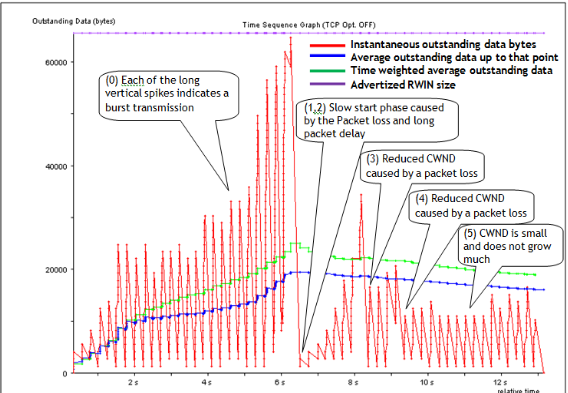
Figure 3: TCP trace over LTE n etwork: o \utstanding data bytes (estimated cwnd)
Figure 3 shows the detailed behavior of TCP and how the transmission rate is dynamically adjusted to the network condition during the lifetime of a connection over the LTE network. In Figure 2, the X-axis represents the time of packet capture, the Y-axis represents the TCP sequence number, and the slope of the graph gives the TCP throughput over time. Figure 3 shows the data transmission rate via outstanding data in bytes during the TCP session. The outstanding data is the amount of the unacknowledged data that can be used to estimate the congestion window at the sender.
LINK LAYER ENHANCEMENT VIA RESOURCE ALLOCATION PROTOCOL
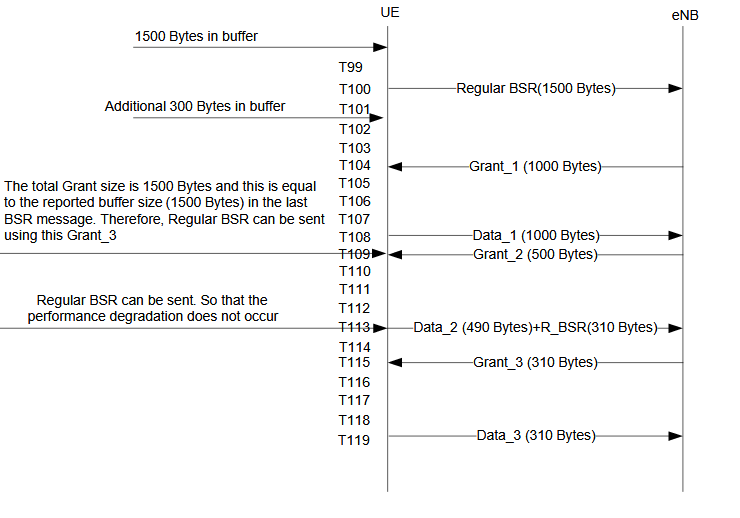
Figure 9: Example in Figure 8 with proposed solution (packet delay performance degradation has been eliminated).
Figure 9 is an example communication flow illustrating UE to eNB packet transmissions according to the enhanced protocol for sending BSR messages detailed in Figure 8 In the illustrated example of Figure 9, the periodic BSR timer is set to 10 subframes and the retransmit BSR timer is set to 2560 subframes. Time, denoted by times instances numbered T99, T1 00… T119 runs from the top to bottom of Figure 9.
While both a periodic BSR timer and a retransmit BSR timer are utilized, activity associated with the expiration of the retransmit BSR timer is not in action/invoked in the illustrated example. At time T99, 1500 bytes are now in the buffer of the UE. At time T100, a regular BSR message is transmitted from the UE to the eNB. The BSR message is characterized as regular since it is the initial BSR message. The BSR message indicates that there are 1500 bytes in the buffer of the UE.
WIRELESS LINK BANDWIDTH SAVING VIA SNOOP -TCP
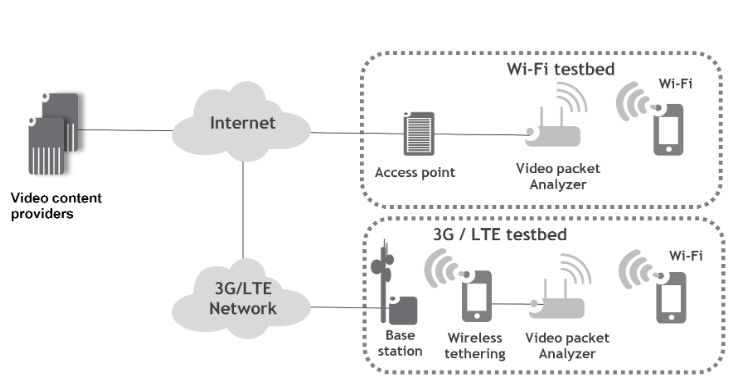
Figure 13 : Testbed for the video traffic measurement
To analyze a various types of video contents, we selected twenty one diverse video titles from the most popular video content providers, in terms of genre, length and video quality. We measured and analyzed HTTP and TCP packets, while displaying the videos on the iPhone, Android and Tablets over wired and wireless networks. This was done by using a client application installed in the user device. Table 2 shows the list of the sample video titles from YouTube.

Figure 15 : Receive window size (bytes) trace with the iPhone and Android phone
Figure 15 shows the TCP receive window size with the iPhone and Android phone. The maximum receive window size is 130K bytes for the iPhone and 82K bytes for the Android. As shown in Figure 15, the iPhone utilizes a higher maximum receive window size and mostly stays above 60K bytes. However, the receive window size trace from the Android is significantly different from the iPhone. It uses a lower maximum receive window size, and also repeatedly drops to 0 bytes. The consequence of this behavior would be from controlling the data transmission by the server.
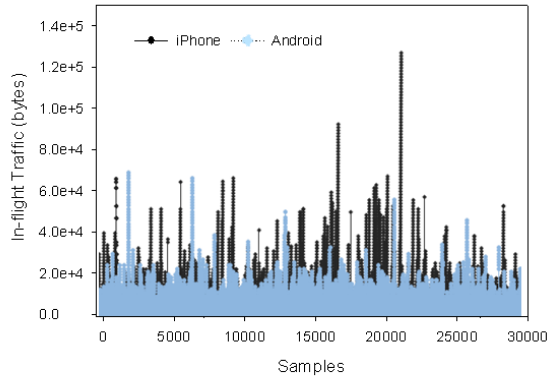
Figure 16: In-flight traffic with iPhone and Android phone
As shown in Figure 16, we also measured the amount of in -flight traffic by analyzing the sender’s TCP header packets. Similarly, the amount of in- flight traffic also indicates that the link utilization of the YouTube application on the iPhone is higher than the one on the Android. For further analysis, we performed measurements over 3G and Wi-Fi access networks using the iPhone and Android phone.
SPLIT TCP WITH END -TO -END PROTOCOL SEMANTICS
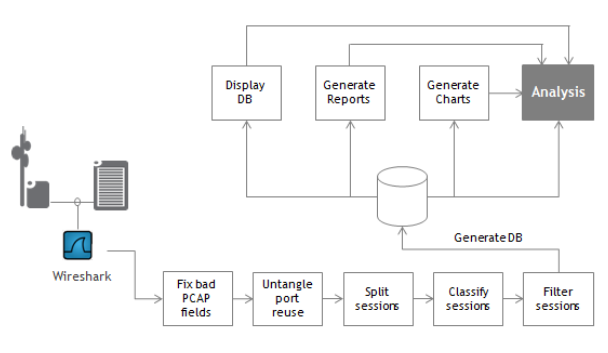
Figure 28: TCP Packet Trace Analysis Process
A massive volume of packet traces has been collected from the field using the Wireshark packet capture tool, and it was followed by an in- depth analysis. Prior analysis, we first corrected some of the packet fields in the Wireshark captured files because we frequently observed that the TCP traces included invalid frame sizes and duplicate TCP port numbers, which caused tangling of multiple TCP test sessions into a single TCP session.
We have developed an automated TCP PCAP analysis tool to handle the massive number of TCP sessions. The complete data process is illustrated in Figure 28: it separates out each TCP session from the input PCAP file and classifies each TCP session per radio technology, per region, per test client sites, and per file size. The detailed TCP packet information is stored in a database for further analysis and for displaying various TCP graphs.
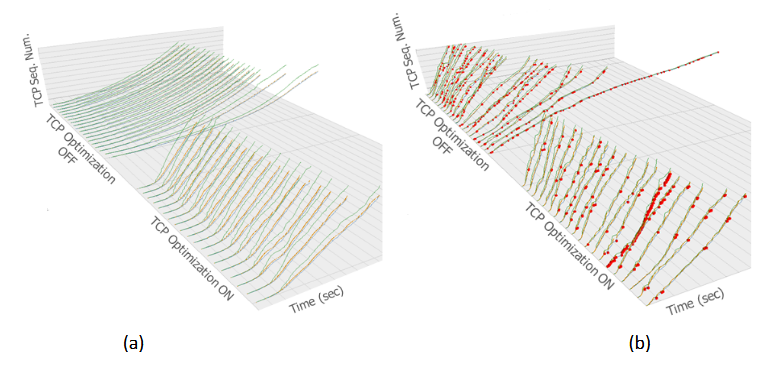
Figure 31 : TCP sequence number graph with (a ) 0% retransmission and duplicate ACKs, and (b) 0.8% retransmission and 10% duplicate ACKs.
Figure 31 (a) represent the TCP sequence number graphs obtained from all individual TCP traces that are collected from the NC locations (good radio conditions) in one of the test regions while downloading a 10 MB file from the server S1 over the 4G LTE network. The group of TCP sequence graphs in the upper part of Figure 31 (a) is collected without TCP optimization while the group of TCP sequence graphs in the lower part of Figure 31 (a) is collected with TCP optimization.
This indicates that the retransmission rate is zero percent, otherwise there would be red dot(s) indicating packet retransmissions and duplicate ACK packets. Furthermore, the throughput gain for this scenario is around 200%, which means that the TCP optimization renders the download speeds three times faster over the baseline.

Figure 33: ES-TCP and AS-TCP host location
The Enhanced Split -TCP (ES- TCP) host (EH) is located along the path between a mobile host (MH) and a far host (FH), and the location should be a single point where all TCP packets must pass through to reach the MH and FH. In case of an LTE network, PGW would be a sufficient candidate. The TCP protocol at the FH or MH does not need to be modified to use ES -TCP. Thus, the description for the ES -TCP mechanism in this Section is focused on the EH only and for the simplicity download from the FS to MH through the EH is assumed. EH consist s of the EH receiver, which receives packets from the FH sender on behalf of the MH and the EH sender, which transmits the received packets to the MH on behalf of the FH as depicted in Figure 33.
Figure 46 depicts the protocol stacks implemented in the MH, EH/AH, and FH. Other network elements in t he simulation platform are built similar way as depicted in Figure 46. The MH and FH include application layer, transport layer, IP layer, link layer (i.e. LTE MAC layer for the MH and Ethernet MAC layer for the FH), and abstraction of the LTE physical layer for the MH. The EH/AH is a key component of the proposed ES- TCP and AS – TCP enhancements.
When a file download request arrives at the Split -TCP host from the MH, it forwards the application request to the FH on behalf of the MH and creates two TCP legs; one for TCP RAN and the other one for TCP WAN. The TCP adaptation layer in the EH/AH inter-connects these two TCP connections so that the packet from the TCP WAN receive buffer is forwarded to the TCP RAN transmit buffer and the ACK sequence number received by the TCP RAN is used by the TCP WAN entity in EH/AH.
CONCLUSION
In this dissertation, we identified three critical problems that may negatively affect the application performance and wireless network resource utilization via application traffic measurement and packet analysis over a commercial LTE network and via LTE network simulation: (i) impact of the wireless MAC protocol on the TCP throughput performance, (ii) impact of applications on network resource utilization, and (iii) impact of TCP on throughput performance over wireless networks.
We further proposed four enhancement mechanisms which improve the end-to-end application and wireless system performance. The work was carried out considering cross-layer protocols behaviors, due to the mutual impact of network protocol layers. To evaluate and quantify the TCP throughput performance gains using ES-TCP and AS-TCP, we implemented them on top of an end-to-end LTE network simulation platform that can estimate the application performance reflecting various protocol interactions and network congestion conditions, including air -link impairments.
The two novel Split-TCP mechanisms, the ES-TCP and the AS-TCP, improve significantly the TCP throughput without breaking the end- to-end TCP semantics. Experimental results show that the proposed ES-TCP and AS-TCP can boost the TCP throughput by more than 60% in average when exercised over a commercial 4G LTE network. Furthermore, the TCP throughput performance improvement may be even over 200%, depending on network and usage conditions.
The simulation results show that the performance enhancement with the proposed solutions is significant and the improvement is noticeable even with a higher air-link data rate available. While some prior solutions maintain the end- to-end semantics and isolate the connectivity issue in the wireless network, they present a few significant drawbacks: the packet loss on wireless network is propagated into the wired network instead of isolating the problem to the wireless network segment; most of all, those solutions lost the critical benefit of Split-TCP, which consists in shortening the round trip time for TCP connections. Shortening the RTT by itself improves the TCP throughput performance significantly, even without link condition changes.
Source: University of Pennsylvania
Author: Bong Ho Kim
>> IoT projects using Android Application for CSE/ECE Students
>> WiFi based IoT Projects for Engineering Students
>> 50+ IoT based Wireless/GSM Projects for Engineering Students
>> IoT based Real-Time Projects for B.E/B.Tech Students
>> 200+ IoT Led Projects for Final Year Students
